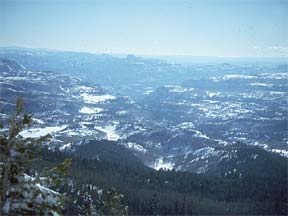
|
Development of Research Strategies
for the Sampling and Analysis of Questions & Sub-questions and Topic Leaders
2. What options exist for fundamental and traceable OC and EC standards? What standards have been used in the past? How well do these represent properties of user communities? What other standards might be added? How can these be created, maintained, and disseminated?
3. How does the sample affect the measurement of different carbon fractions? How do properties of particles on a filter differ from those in ambient air? How do different compounds react with heat and among themselves to create pyrolized carbon? How do different filter loadings affect optical measures of pyrolysis? Under what conditions might other carbon-containing components (e.g., carbonates) be detected as OC or EC? What additional information should be reported with OC and EC values to evaluate the precision and validity of an OC/EC split?
4. What are the important parameters that need to be defined for a carbonaceous aerosol analysis and how should these be documented for different analysis protocols? How do temperature plateaus, analysis times, combustion atmospheres, heating rates, and optical pyrolysis monitoring affect the definition of carbon fractions? What differences in analysis protocols should be reported with OC and EC concentrations?
5. What specific compounds are likely to evolve during different temperature fractions of thermal evolution methods used to analyze carbonaceous aerosols? To what extent do similar compounds evaporate within definable temperature groupings? How well do current temperature-defined fractions defined useful groupings? How might temperature fractions or the detection of thermally-evolved products be optimized for applications such as source attribution?
6. How does carbonaceous particle composition, shape, and size affect optical properties in the air and when sampled on a filter? How might optical properties of particles in the air differ from those collected on a filter? How might filter transmittance and reflectance change during heating as particle morphology and composition change? Why might optical transmission and reflectance give different pyrolysis corrections?
7. How might current analysis methods be enhanced or combined to obtain more information about the nature of OC, EC, and other carbon fractions in filter samples? What can be done with existing analysis methods and samples? What might be provided by collocated measurements? What hardware and software changes would permit more of the commonly applied protocols to be applied with the same analytical instruments?
|
| APACE | SOA | OCEC Home | Contact Us |
